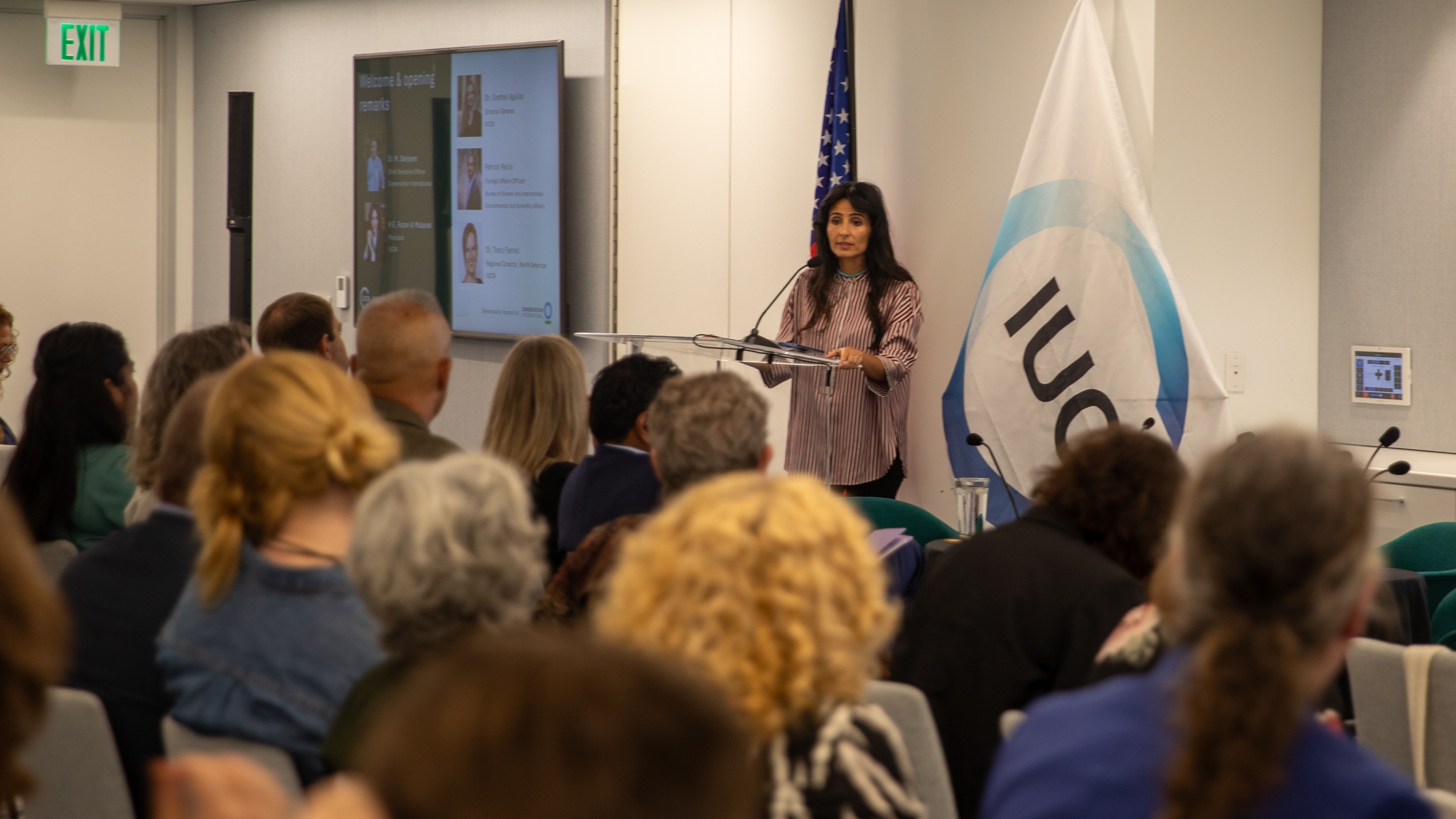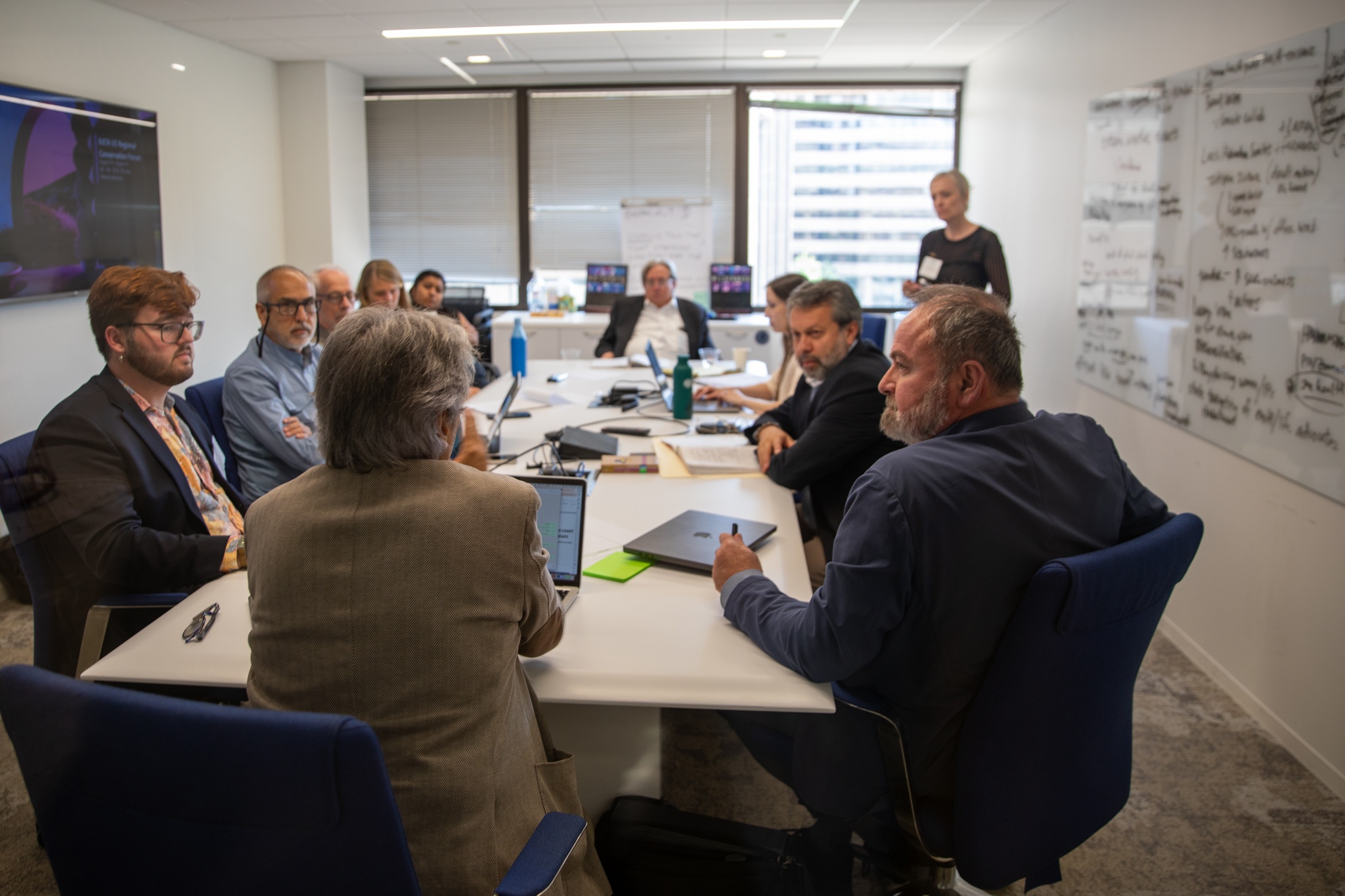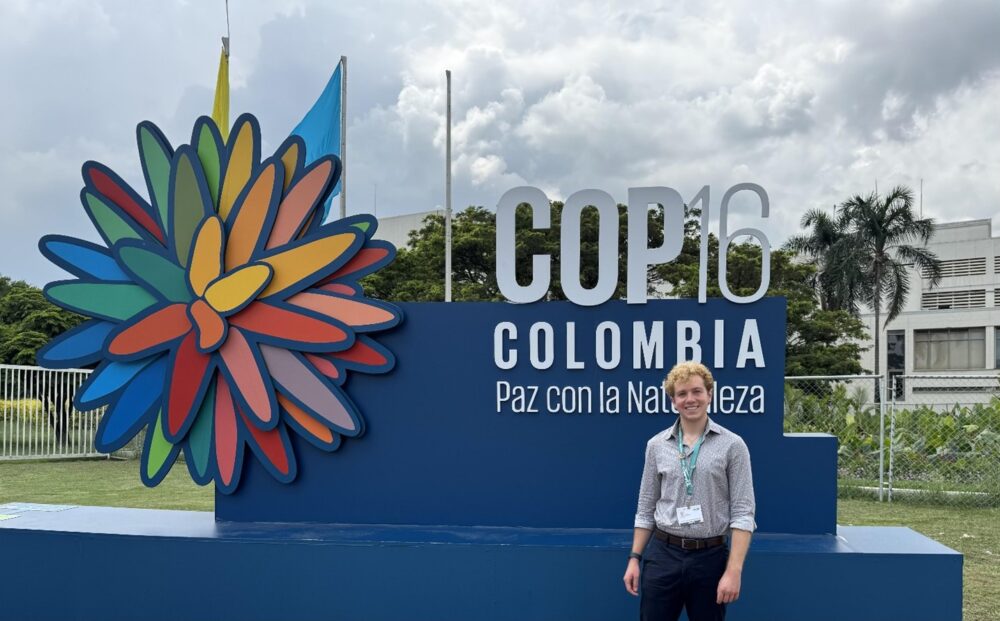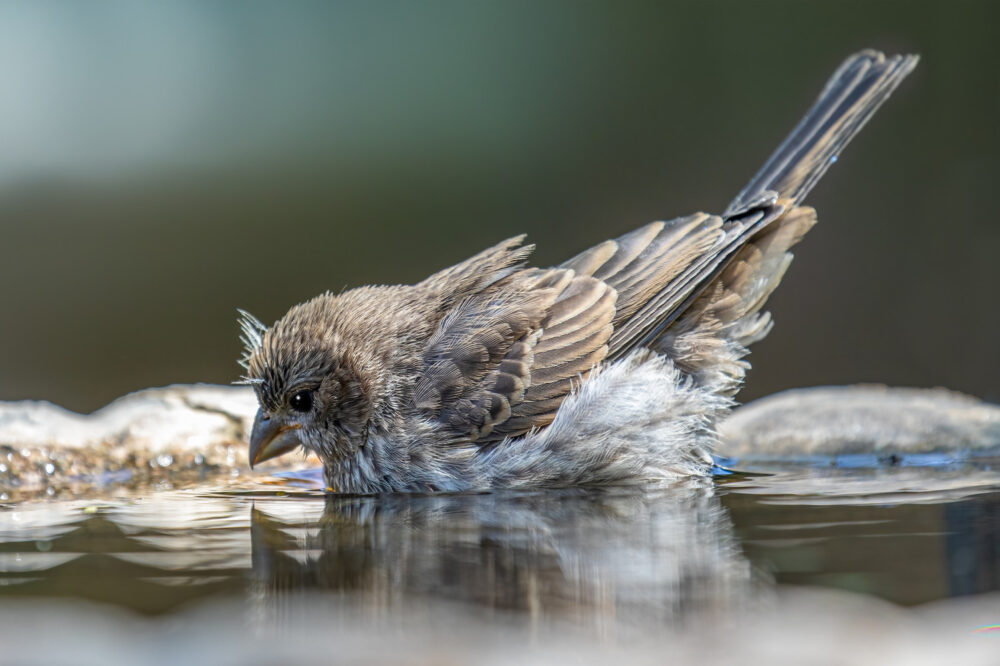We have much more to do and your continued support is needed now more than ever.
Raising Youth Voices at the IUCN U.S. Regional Conservation Forum

Only seven hands went up, when a room filled with over 100 conservationists was asked “Who here is under the age of 35?” Conservation leaders from around the country flew to Conservation International’s headquarters to attend the IUCN’s U.S. Regional Conservation Forum. Standing at the front of the room, my hand was one of the seven raised. I had been invited to speak on the opening panel of the forum, as a representative discussing youth issues within conservation. It was clear that the issue needed attention.
At this meeting representatives from government agencies, IUCN commissions, and conservation charities would work to set the policy agenda for the U.S. delegation at the World Conservation Congress in 2025.
Member organizations came with proposals for possible resolutions they wished to push forward and topics they wished to explore. While I had raised issues related to youth involvement on the opening panel, I was also there to chair the youth policy working group to help shape proposals to increase youth involvement across the organization.

What is the IUCN?
However, before we get into what happened, it is important to understand the broader context of the IUCN. The International Union for Conservation of Nature (IUCN) is a global organization dedicated to conserving nature and ensuring that natural resources are used sustainably. Founded in 1948, the IUCN brings together governments, NGOs, scientists, and experts to address pressing environmental challenges through research, policy advocacy, and on-the-ground projects.
The IUCN is most famous for its work creating the Red List of Threatened Species; a comprehensive inventory that assesses the conservation status of thousands of species worldwide.
The IUCN uniquely has government agencies and NGO’s sitting on equal footing when debating conservation issues. Because of this, it acts as a proofing ground for ideas before they make it into international treaty negotiations. Which was exactly what this regional conservation forum was for—to provide a testing ground for debating key ideas that American nature organizations wanted to make a reality.
What is a Regional Conservation Forum (RCF)?
The IUCN Regional Conservation Forum is held only once every four years. Members from conservation organizations and government agencies around the nation come together to begin sharing updates and ideas surrounding the future of conservation in the United States. However, this experience is not unique to just the United States, across the world eight other regional forums are held in preparation for World Conservation Congress in 2025.
The U.S. Regional Conservation Forum is small compared to its international counterparts. While international forums can garner massive attendance the U,.S. RCF only has about 100 attendees. This is not for lack of interest, but almost the complete opposite. The United States has more IUCN member organizations than any other country, with some of the world’s wealthiest and preeminent conservation organizations being based out of the U.S.
The U.S. RCF focuses heavily on policy and key gaps to address at the World Conservation Congress. Speakers discuss novel and new projects, areas of future work, and key areas for growth. IUCN North America invited me to speak on how to involve youth in conservation programs and decisioning making processes—an area in dire need of more advocacy.

Youth involvement in conservation
The IUCN defines “youth” as those under 35 years of age. As one of only seven people in the room to fall under this threshold I knew that I had to make the case for why there should be more young people at this meeting.
In my opening remarks on the 2030 conservations visions panel, I felt and acknowledged the weight of this responsibility. I spoke of my experience with the Global Youth Biodiversity Network USA chapter and attending the UN Convention on Biological Diversity as a youth delegate. I also highlighted that experience and expertise are incredibly valuable, but aspects of institutional knowledge cannot be shared and passed down if a younger generation is not invited to be in the room where decisions are made.
On the second day of the forum, I chaired a youth resolutions working group where attendees shared ideas for how to empower youth within the organization. We brainstormed solutions to the challenge of youth involvement, such as creating youth spots on the IUCN board, new funding arrangements for youth to attend decision making conferences, and even a potential way to track youth attendance at each IUCN event.
Attendees brought excitement to bolster youth involvement and even after our session time slot expired, people gathered in the halls to further discuss more ways we could help add young people into the IUCN process.
While no radical revolution of youth involvement occurred over those two days, the Forum began a needed conversation to increase youth conservation leadership. Institutions must continue to work on creating space for meaningful youth participation at all levels of decision making. It is also up to participating organizations to send younger members of their team alongside senior staff.
When provided these opportunities, young people can provide unique insights and begin building their skillsets to lead conservation organizations into the future.





















